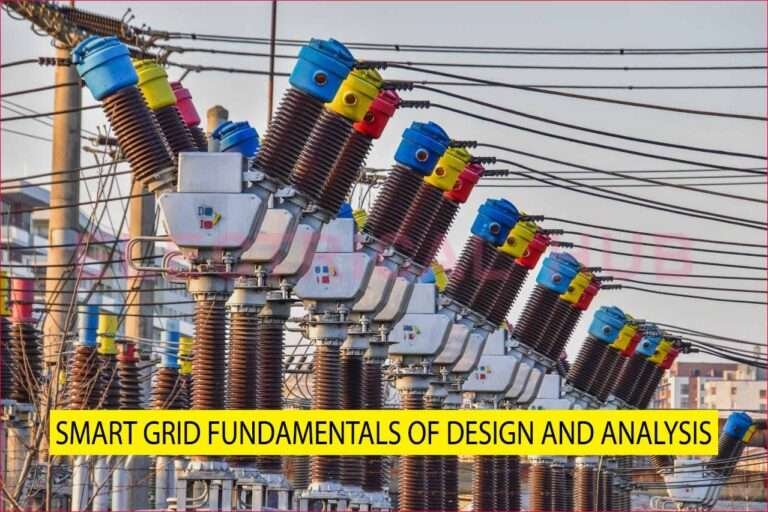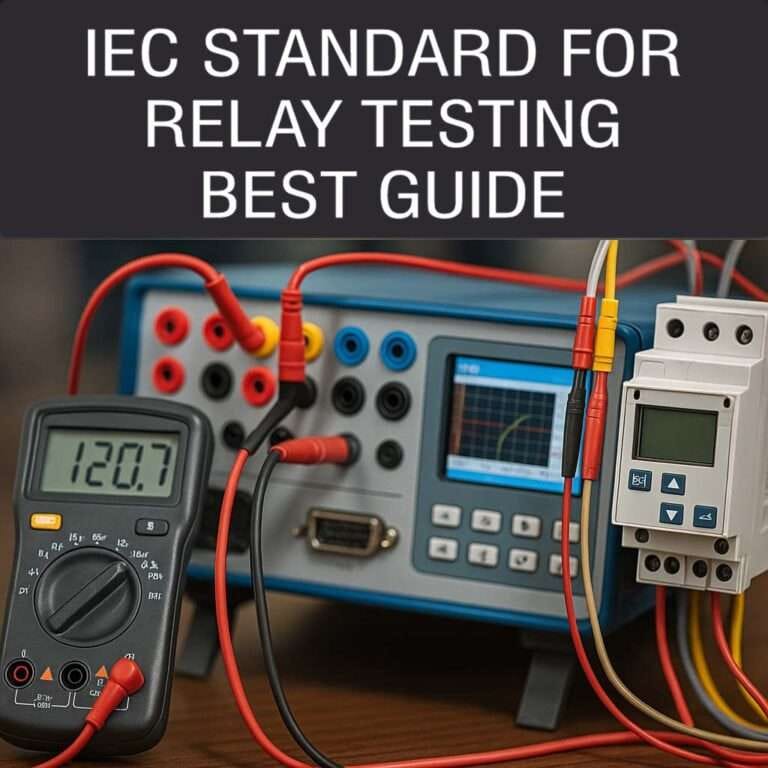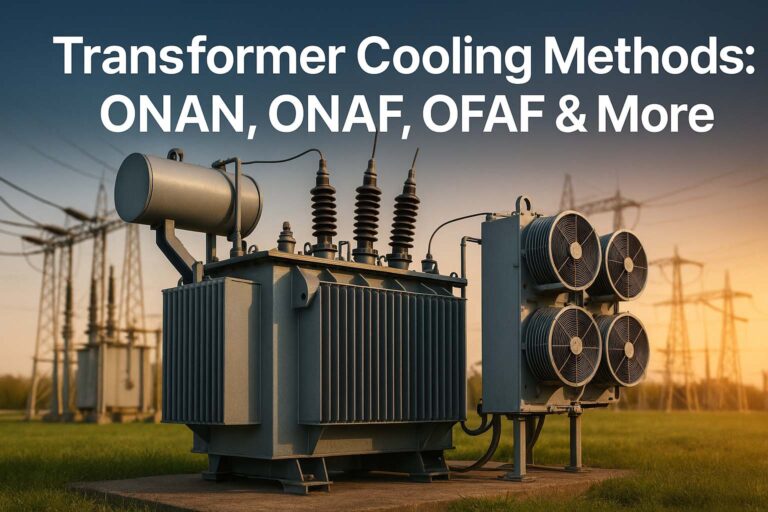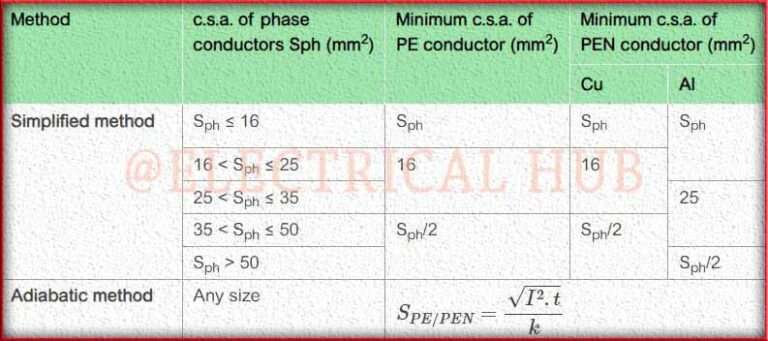IEC Standard for Generator Protection – Key Guidelines and Compliance Requirements
Generator protection plays a vital role in maintaining the reliability and safety of power systems. Modern power plants, industrial facilities, and renewable energy setups all rely on effective protection schemes to prevent damage and ensure continuity of supply.
The IEC standard for generator protection provides international guidelines for how generators should be protected against electrical, mechanical, and thermal faults. This article explores these standards, their applications, protection functions, and how they ensure generators operate safely and efficiently.
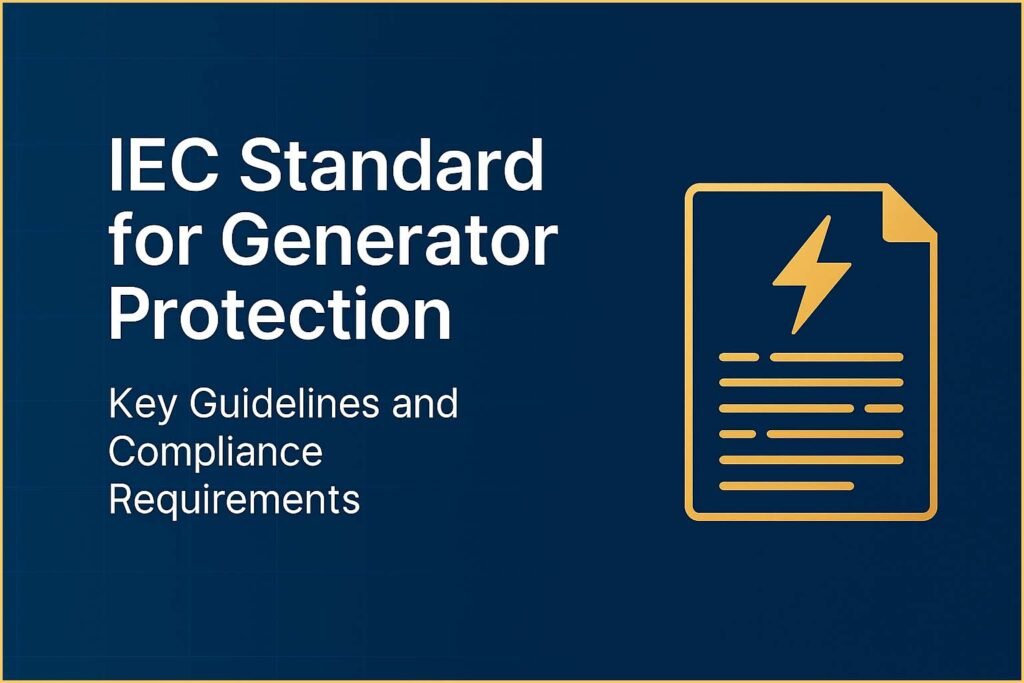
Table of Contents
Understanding the IEC Standard for Generator Protection
The International Electrotechnical Commission (IEC) defines standards for electrical and electronic systems used worldwide. These standards create a common language for engineers and manufacturers, ensuring equipment compatibility, safety, and performance.
When it comes to generators, the IEC standard for generator protection refers primarily to the set of guidelines outlined in IEC 60034, IEC 60255, and IEC 60092 series. These documents describe the recommended protection functions, testing methods, and performance criteria for generator protection systems.
IEC 60034 focuses on rotating electrical machines. It defines aspects such as insulation, thermal limits, voltage, frequency variation, and fault conditions. IEC 60255 addresses measuring relays and protection equipment — essentially, it specifies how protection relays should perform when safeguarding generators.
Together, these standards provide a clear framework for designing reliable generator protection systems that prevent failures, reduce downtime, and improve operational safety.
Use our online Tool Creepage Distance Calculator – Calculate Safe Insulation & Clearance for PCB and High Voltage Design
Objectives of IEC Standard for Generator Protection
The IEC standard aims to protect both the generator and the connected system. The objectives include:
- Preventing damage to generator windings, rotor, and stator during faults
- Ensuring stable operation under abnormal voltage, frequency, or temperature conditions
- Detecting mechanical or electrical abnormalities early
- Minimizing outage duration and repair costs
- Maintaining system reliability and safety for operators
These objectives are achieved by implementing different protection functions as defined in the IEC 60255 and IEC 60034 guidelines.
Key Protection Functions in IEC Standard for Generator Protection
Under the IEC standard, protection functions are categorized based on fault type and operational condition. The following table shows the main protection functions recommended for synchronous generators:
| Protection Function | IEC Code | Description | Purpose |
|---|---|---|---|
| Differential Protection | 87G | Compares current entering and leaving the generator | Detects internal winding faults |
| Stator Earth Fault Protection | 64G | Monitors insulation between stator winding and ground | Detects single-phase earth faults |
| Rotor Earth Fault Protection | 64R | Measures insulation resistance of rotor circuit | Prevents rotor-to-ground short circuits |
| Overcurrent Protection | 50/51 | Instantaneous or time-delayed overcurrent detection | Protects against excessive current |
| Overvoltage Protection | 59 | Detects overvoltage conditions | Prevents insulation damage and overexcitation |
| Underfrequency Protection | 81U | Detects low frequency operation | Prevents overheating and instability |
| Overfrequency Protection | 81O | Detects high frequency operation | Protects against overspeed conditions |
| Loss of Excitation | 40 | Detects excitation failure | Prevents loss of synchronism and system instability |
| Negative Phase Sequence | 46 | Detects unbalanced load | Prevents rotor heating due to negative sequence currents |
| Reverse Power Protection | 32 | Detects power flow reversal | Prevents generator motoring during shutdown |
These protection elements work together under the IEC framework to provide complete generator security.
Know more about IEC Standard for Gas Insulated Switchgear – IEC 62271 Compliance, Design & Safety Guide
IEC Standard for Generator Differential Protection
The differential protection scheme, represented by the code 87G, is the most critical protection function in the IEC standard for generator protection. It measures current at both ends of the generator stator winding and compares the difference. Under normal operation, the difference is nearly zero.
If a fault occurs within the generator winding, such as a short circuit or insulation breakdown, the differential current rises sharply. The relay instantly detects this imbalance and isolates the generator from the system to prevent damage.
IEC 60255 specifies the performance requirements for differential relays, ensuring fast and selective tripping under internal faults and stability under external disturbances.
Overcurrent and Earth Fault Protection as per IEC Standard
Overcurrent protection (50/51) ensures the generator does not experience prolonged overloading or external fault conditions. According to IEC 60034-1, the generator must withstand short-term overloads, but continuous overcurrent can cause thermal damage. Therefore, time-delayed and instantaneous relays are used.
Stator earth fault protection (64G) monitors the insulation between the stator winding and the earth. IEC recommends using either a neutral resistance grounding system or a voltage detection method to detect faults. In large generators, 95% to 100% stator earth fault protection is typically applied using a combination of third harmonic voltage detection and injected low-frequency signals.
Rotor Protection and Loss of Excitation
The rotor earth fault protection (64R) is essential because any short circuit in the rotor circuit can cause severe mechanical vibrations or loss of synchronism. The IEC standard suggests continuous insulation monitoring for rotor circuits, especially in high-capacity synchronous machines.
The loss of excitation protection (40) detects when the generator’s field current drops suddenly. Without excitation, the generator can start operating as an induction generator, drawing reactive power from the grid and causing instability. IEC recommends impedance-based or reactive power-based detection methods for this protection.
Know more about IEC Standard for Creepage Distance – Electrical Insulation Requirements and Design Guide
Overvoltage and Frequency Protections under IEC Standard
The overvoltage protection (59) and undervoltage protection (27) are used to maintain voltage within safe operating limits. According to IEC 60034, voltage variations exceeding ±10% can cause insulation stress and accelerated aging. These relays trip the generator when the voltage exceeds the defined threshold.
Frequency protection includes overfrequency (81O) and underfrequency (81U) elements. The IEC standard defines the normal operating range between 47 Hz and 52 Hz for 50 Hz systems. Prolonged deviations lead to mechanical stress or poor power quality.
Negative Phase Sequence and Reverse Power Protection
Unbalanced loads or asymmetrical faults create negative sequence currents that heat the generator rotor. The negative phase sequence protection (46) detects this imbalance and trips the generator if the unbalance exceeds the limit defined in IEC 60034-1, typically around 10% of the rated current for continuous operation.
The reverse power protection (32) prevents the generator from running as a motor when the prime mover (such as a turbine) fails. It detects power flowing back into the generator and isolates it immediately.
Recommended Settings Based on IEC Standard
IEC standards provide guidelines for setting protection relays based on generator rating and application. The table below summarizes common setting ranges:
| Protection Function | Typical Setting | Time Delay |
|---|---|---|
| Differential Protection (87G) | 10–30% of rated current | Instantaneous |
| Overcurrent (51) | 110–125% of rated current | 1–10 seconds |
| Earth Fault (64G) | 10–20% of rated current | Instantaneous |
| Negative Sequence (46) | 10% of rated current | 2–10 seconds |
| Overvoltage (59) | 110% of rated voltage | 1–5 seconds |
| Underfrequency (81U) | 47.5 Hz | 2–10 seconds |
| Overfrequency (81O) | 52.0 Hz | 2–10 seconds |
| Reverse Power (32) | 2–10% of rated power | 2 seconds |
These settings must be fine-tuned based on the generator size, system configuration, and operational requirements.
Use our online tool Electricity Load Calculator (kVA) According to IEC and NEC
Importance of Compliance with IEC Standard for Generator Protection
Adhering to the IEC standard for generator protection ensures consistent and safe operation of power generation systems. It also facilitates easier coordination between protection devices and control systems across different manufacturers and installations.
Compliance provides several advantages:
- Global interoperability and acceptance
- Reduced risk of catastrophic generator damage
- Improved protection coordination with transformers and feeders
- Better asset management and maintenance planning
- Enhanced power system stability and reliability
Power plants and industrial users who follow these standards also benefit from simplified testing, documentation, and regulatory approvals.
Integration with Generator Protection Calculators
To help engineers and operators apply the IEC standard effectively, many online and software-based calculators are available. These tools calculate protection settings based on the generator’s capacity, rated voltage, and connection type.
The Generator Protection Calculator based on IEC standards simplifies the process by:
- Recommending relay settings according to IEC 60255 and IEC 60034
- Calculating appropriate pickup currents and time delays
- Estimating protection coordination with system components
- Providing quick analysis for overcurrent, differential, and frequency protections
This calculator ensures that generator protection is not only compliant but also optimized for system reliability and operational efficiency.
Use our online tool MM to AWG Wire Size Calculator According to IEC and NEC
Conclusion
The IEC standard for generator protection provides the foundation for reliable, safe, and efficient power generation. From differential protection to frequency monitoring, every function plays a crucial role in maintaining system stability.
By implementing the protection schemes as per IEC 60034 and IEC 60255, engineers ensure that the generator remains secure against internal and external faults. When combined with intelligent tools like the generator protection calculator, compliance becomes simpler and more precise.
Ultimately, adherence to IEC standards is not just a regulatory requirement but a smart investment — one that enhances safety, reduces downtime, and extends the life of every generator in the system.
Follow Us on Social:
Subscribe our Newsletter on Electrical Insights for latest updates from Electrical Engineering Hub
#GeneratorProtection, #IECStandards, #ElectricalEngineering, #PowerSystems, #GeneratorSafety, #ElectricalProtection, #IndustrialGenerators, #PowerGeneration, #IEC60034, #ElectricalStandards, #GeneratorTesting, #ProtectionRelays, #ElectricalSafety, #IECCompliance, #EngineeringStandards

